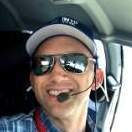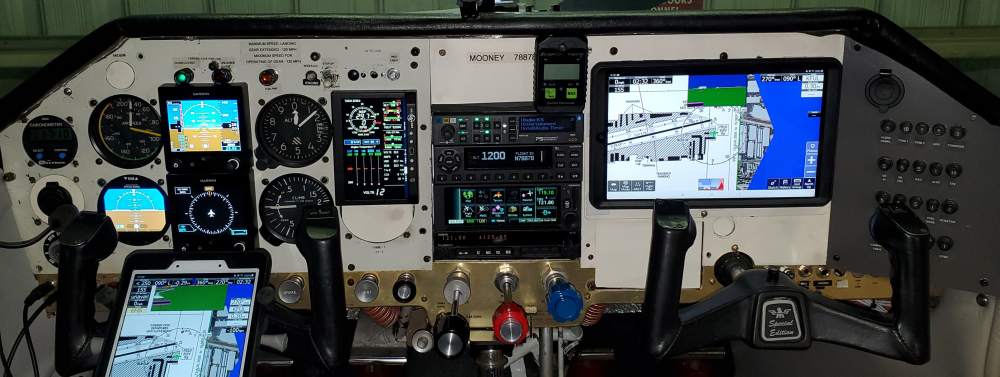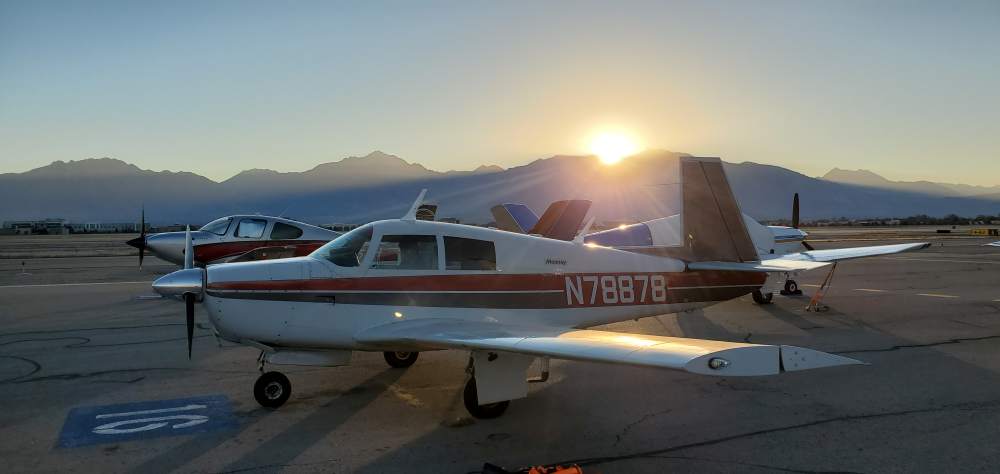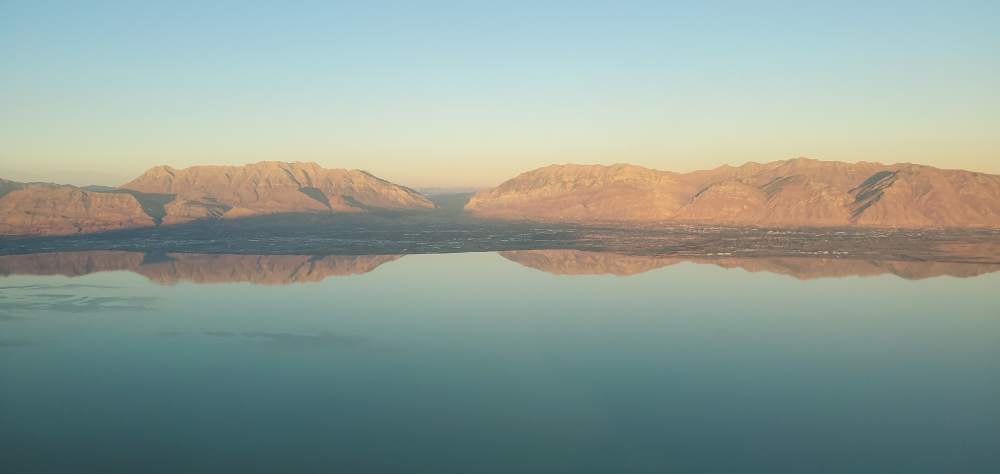-
Posts
3,314 -
Joined
-
Last visited
-
Days Won
29
Content Type
Profiles
Forums
Blogs
Gallery
Downloads
Media Demo
Events
Everything posted by Skates97
-

Garmin GFC 500 AP for C, D, E Mooneys
Skates97 replied to Greg Ellis's topic in Vintage Mooneys (pre-J models)
I know there are many folks that know they are buying a plane to use for a period of time and then re-sell. In those cases I don't think I would be putting any money into it that isn't required to keep it flying. However, I bought our plane without any intention of re-selling so I subscribe to your "2 cents" principle and it is the way I spend money on our plane. Nothing I have done has been to increase the re-sale value, it is all because it either increases the safety of it or my enjoyment of it. -
I haven't had the G5's in for very long but do have quite a few hours behind them now. The VSI on the G5 works well for me and I look at it far more than the traditional VSI in the panel. Then again, before I had the G5's I would look at the Altimeter more than the VSI to hold altitude because of the lag in the VSI. If I had an IVSI like Hank maybe it would get more attention from me.
-
Yes, I understand that. They can't give it in feet per minute because that is dependent upon your speed, but I would challenge anyone to fly and keep track of it by altitude gained over distance traveled instead of doing the math and making sure they are climbing at xxx fpm. I was just surprised to see that you don't have to have a VSI for Part 91 IFR operations. Seems that a VSI while not required is extremely beneficial.
-
This came up in a different thread but I wanted to start a new thread rather than completely sidetrack that one. I thought that the VSI was required, but from looking through 91.205 at required instrumentation it is not. This brings up my question. I am just now getting into studying for my IFR written. If you don't have a VSI in the plane, how would you make sure you are meeting the minimum climb gradient?
-

JPI EDM-900 C model installation thread
Skates97 replied to GWRatcliff's topic in Vintage Mooneys (pre-J models)
Huh, just learned something new today. In looking through 91.205 it doesn't look like it is required for IFR flight either. Rather than sidetrack this whole thread I'm going to start another one to get some input on IFR and VSI's. -

JPI EDM-900 C model installation thread
Skates97 replied to GWRatcliff's topic in Vintage Mooneys (pre-J models)
That's pretty similar to what I did with my panel. Once I get an AP (looking like the GFC500) then I will get a new panel cut and flush mount the G5's and the EDM900. (And have it all one color instead of a hodgepodge of different ones...) -
-

JPI EDM-900 C model installation thread
Skates97 replied to GWRatcliff's topic in Vintage Mooneys (pre-J models)
G5 has a VSI but it isn't primary for VSI so you have to keep your old one in the panel. -

‘66 E model unusable fuel
Skates97 replied to Yourpilotincommand's topic in Vintage Mooneys (pre-J models)
If you are going to weigh the plane you need to know. Also, depending on the engine monitor you have you want to have it programmed correctly. For a EDM900 one of the items you need to specify when ordering is the amount of unusable fuel. -

‘66 E model unusable fuel
Skates97 replied to Yourpilotincommand's topic in Vintage Mooneys (pre-J models)
I regularly run a tank dry on long cross country flights. If it's a four hour flight I want the last 10-12 gallons left in one tank instead of split up. When I fill up I regularly put 25.7-25.8 in which leaves me with 0.2-0.3 unusable. That experience lines up with the documentation. There is no listing in the POH for unusable fuel but as previously mentioned the TCDS lists 3.4 lbs which comes to .56 gallons. I took that from each side leaving 25.7 gal useable in each side. -
I can't imagine why, but my wife thinks it's more fun to spend Halloween with the grandkids instead of at home. She drove to UT on Sunday and my son and I flew up to Salt Lake yesterday. Over Las Vegas I passed 500 hours. Descending over Utah Lake it was almost like glass and made for a great picture reflecting the mountains in on its surface.
- 633 replies
-
- 15
-

-

Garmin GFC 500 AP for C, D, E Mooneys
Skates97 replied to Greg Ellis's topic in Vintage Mooneys (pre-J models)
This is the reason I put the G5's in. Not sure what the install price is because I did the work myself but that sounds a little high for one G5? -
KFUL is just a Delta class but they handle it like this. Request flight following from ground, they give you your squawk, heading, and frequency for SoCal. Once you are airborne they quickly hand you off to SoCal and you're in your way.
-
I'm just getting into the ground school stuff to start my IFR. I'm 4 years into owning our Mooney and have over 400 hours in it all VFR. Our regular trips are SoCal to Phoenix and Salt Lake, but we have been to Oregon, Idaho, and last summer the East Coast. In fact I'll be wheels up in about 4 hours to spend the weekend in Salt Lake with the grandkids, looks to be a beautiful weekend to fly. I think part of the dispatch rate comes into where you live, as @larryb mentioned above. In the 400+ hours we have only scrubbed a couple of trips because of the weather, more often we are adjusting a departure/arrival by a few hours or a day. Once we were going from SoCal to Idaho Falls area and had to divert about 60 miles to the west to go around thunderstorms ahead of us, but out west it is often unlimited visibility (outside of fire season) and between what I can see out the windshield plus the weather on my tablet I stay out of trouble. I haven't hesitated to take longer trips and honestly haven't ever had any real anxiety over the weather. I will watch the weather patterns in the week leading up to the trip, plan accordingly, and get my briefings. The main reason I want to get my rating is because often the marine layer will keep me grounded in the morning here in certain times of the year until it burns off.
-
When I had the EDM830 installed I found that my mechanical tach read higher than actual. I don't remember the exact number but I think it was around 100, at 2700 on the mechanical it was actually only making about 2600 or so. Now with the 900 there's no more issue of the tachs not agreeing.
-
I practiced it with my CFI and with 700' it is doable but that was knowing it was coming. With the startle factor and reaction time I don't think that is totally realistic for me, although if I am constantly looking for it I think 800' is doable in my plane for me. Practice shows that you are looking at a lot of ground as you come around through the turn and make sure to keep a constant eye on both your bank and airspeed. There are a few things I try to recite out loud before every take-off. For the emergency landing option if it is a new airport to me then I try to find a place using Google maps satellite view but if not then I tell myself below "XXX" altitude I am looking for a place in front of me. Field elevation / altitude I think I can turn back / pattern altitude When I should be airborne / If not pulling power and stopping straight ahead Best landing option if problems happen when out of runway and too low to turn For KFUL where I'm based out of I'm typically taking off on 24, so it is: "Field is at 96', I can think of making a turn back at 896, pattern altitude is 1096" "Should be off the ground by Charlie, if not I am stopping straight ahead" "If there are problems just after take off my best choice is Commonwealth" (Not a lot of good options from KFUL but it is a street sort-of aligned with the runway) Once I begin the roll I call out in the air and passing my decision point, ie: "We are flying and there goes Charlie." After that I try to count off the altitude, "There's 400, there's 500', there's 900 we can turn back if needed," etc...
-
I have a Narco ID-825 indicator that I just pulled out of my panel. It was working when I removed it if you are interested. I can send you pics tonight.
-
That's great! I know it is posted around here somewhere else, but how far behind them starting on your F was the E that they are working on? I'm just trying to get a feel for the timeline on the short bodies.
-
What I have read (it was on the internet so must be true) is that leaving the hydraulic flaps full down can cause issues if there is a temperature increase leading to the fluid expanding and putting pressure on the seals. I am thinking about times I have flown into AZ and it was nice and cool in the morning and significantly hotter in the afternoon. I suppose if they were left in TO position that would alleviate that problem as there would be room for het fluid to expand? That being said, part of my pre-flight checklist is to lower the flaps and then check them on the walk around. They stay down and then on my pre-start checklist is raising the flaps so they are down when everyone is boarding. I do raise them after landing so they are up when people are getting out but that hasn't been an issue with them stepping on them as they are focused on not missing the step.
-
They are a beautiful car. Between our two Chevrolet stores we have sold 38 this year, they are gone almost as fast as they come in. (Almost all were pre-sold) They are coming in for random issues but no patterns to it, yet...
-
I've spent the last 26 years in the automotive dealership industry and whole heartedly agree. It is like the first year is just put out there to let the new owners troubleshoot issues. The same thing can be said if it is a previous model and they have come out with a new engine or transmission. Give it a couple years for them to work out the issues.
-
Maybe it needs to be adjusted, but before doing that take a look at the prop cable and the travel. Always check off the simplest things first. I had a problem shortly after getting the plane where I wasn't getting 2,700 RPM. From this post in a thread I started follow on down to @M20Doc's suggestion and then the subsequent easy fix. The prop cable had slid up in the clamps and was not allowing it to hit the stop.
-

**SOLD** Garmin GI-106B with Install Kit (New) - $2000
Skates97 replied to Skates97's topic in Avionics / Parts Classifieds
Price Drop to $2000 -
It's interesting, I think I have about 15 hours now with the dual G5's. I find that for altitude and vertical speed I look at the G5. For airspeed I still tend to look at the ASI, I think it is a combination of habit and also it is easy after all my time in the plane to know at a glance what my speed is by where the needle is positioned. I imagine over time I will probably transition more to the G5's for all of that information.






